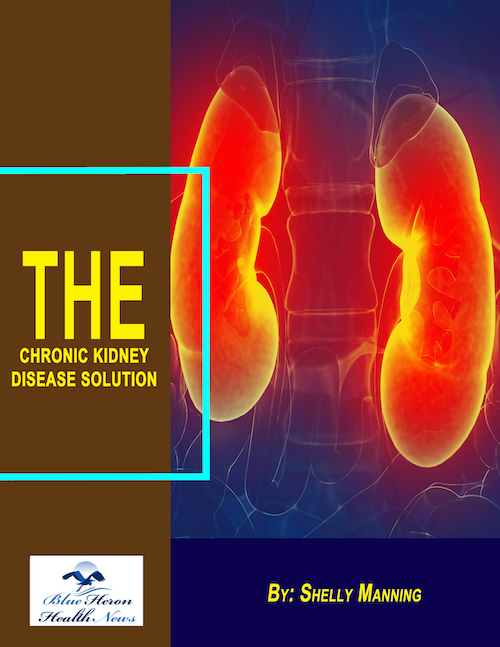
The Chronic Kidney Disease Solution™ By Shelly Manning The information provided in this write-up about The Chronic Kidney Disease Solution, a guide, helps in motivating people to get rid of the chronic problems on their kidneys without using any harmful methods. It eliminates your kidney problem by focusing on the poor health of your gut and inflammation.
How is fluid intake managed during dialysis?
Managing fluid intake during dialysis is crucial to avoid complications and maintain overall health. Here’s how it’s typically managed:
1. Fluid Restrictions
- Why: Dialysis patients cannot eliminate excess fluids efficiently between sessions, leading to fluid buildup in the body. This can cause swelling, high blood pressure, and stress on the heart.
- How: A healthcare provider sets daily fluid intake limits based on factors like urine output, body weight, and treatment plan.
2. Monitoring Weight Gain Between Sessions
- Patients are weighed before and after each dialysis session.
- Weight gain between treatments indicates fluid retention.
- Ideally, weight gain should not exceed 2-3% of body weight between sessions.
3. Controlling Sodium Intake
- Sodium makes the body retain water, increasing thirst and fluid retention.
- A low-sodium diet helps reduce fluid buildup.
4. Balancing Fluid Types
- Fluid management includes considering all sources of fluids, not just water.
- This includes soups, fruits (like watermelon and oranges), ice, and beverages.
5. Identifying Signs of Fluid Overload
Patients are taught to watch for signs of fluid overload, including:
- Swelling (edema) in the legs, hands, or face
- Shortness of breath
- High blood pressure
6. Customized Fluid Recommendations
- Anuric patients (those producing no urine) have stricter limits.
- Patients with some remaining kidney function may have slightly higher fluid allowances.
7. Tips to Manage Thirst
- Sucking on ice chips or hard candies
- Using lemon to enhance the taste of water
- Avoiding salty or spicy foods
- Maintaining oral hygiene to reduce the sensation of thirst
Would you like guidance on diet recommendations for dialysis patients as well?
Long-term dialysis can be life-saving for those with kidney failure, but it also comes with potential complications. Below are the common challenges associated with prolonged dialysis treatment:
1. Cardiovascular Disease
- Why: Fluid and electrolyte imbalances, hypertension, and inflammation can stress the heart.
- Complications: Increased risk of heart attack, heart failure, and stroke.
2. Bone and Mineral Disorders
- Why: Dialysis affects calcium and phosphorus levels, disrupting bone metabolism.
- Complications: Osteoporosis, bone pain, and fractures.
3. Fluid Retention and Swelling (Edema)
- Why: Ineffective fluid removal between sessions.
- Complications: Swelling in the legs, hands, and lungs; high blood pressure; shortness of breath.
4. Infections
- Why: Repeated needle punctures or permanent access sites (like fistulas or catheters).
- Complications: Bloodstream infections, sepsis, or localized infections.
5. Dialysis-Related Amyloidosis (DRA)
- Why: Buildup of beta-2 microglobulin protein due to inadequate removal by dialysis.
- Complications: Joint pain, stiffness, and bone cysts.
6. Anemia
- Why: Reduced production of erythropoietin, blood loss during dialysis, and poor iron absorption.
- Complications: Fatigue, weakness, and cognitive difficulties.
7. Nutritional Deficiencies
- Why: Loss of essential vitamins and minerals during dialysis.
- Complications: Weight loss, muscle weakness, and weakened immune function.
8. Psychological and Emotional Effects
- Why: Strict treatment schedules, dietary restrictions, and lifestyle limitations.
- Complications: Depression, anxiety, and social isolation.
9. Skin Problems
- Why: Phosphorus buildup and calcium deposits in the skin.
- Complications: Itching (pruritus) and skin lesions.
10. Hypotension (Low Blood Pressure)
- Why: Rapid fluid removal during dialysis sessions.
- Complications: Dizziness, nausea, and fainting.
11. Peripheral Neuropathy
- Why: Nerve damage due to toxin buildup and inadequate dialysis.
- Complications: Numbness, tingling, or burning sensations in the hands and feet.
12. Long-Term Vascular Access Issues
- Why: Repeated use of arteriovenous fistulas or grafts.
- Complications: Stenosis, clotting, or scarring of access sites.
Would you like information on strategies to mitigate these complications?
The Chronic Kidney Disease Solution™ By Shelly Manning The information provided in this write-up about The Chronic Kidney Disease Solution, a guide, helps in motivating people to get rid of the chronic problems on their kidneys without using any harmful methods. It eliminates your kidney problem by focusing on the poor health of your gut and inflammation.